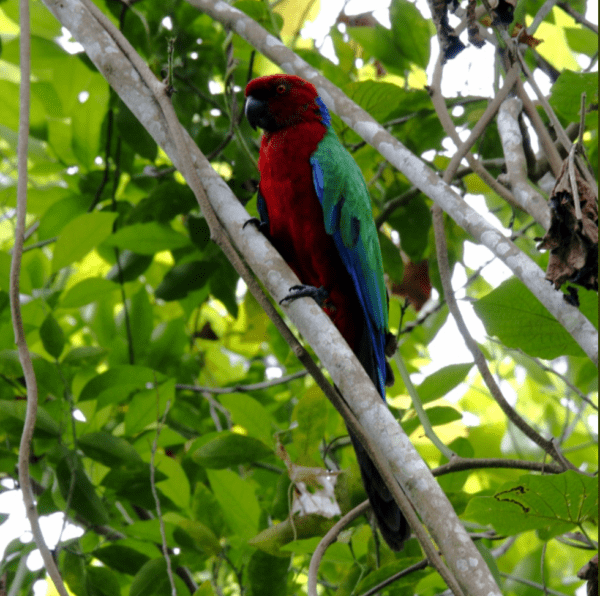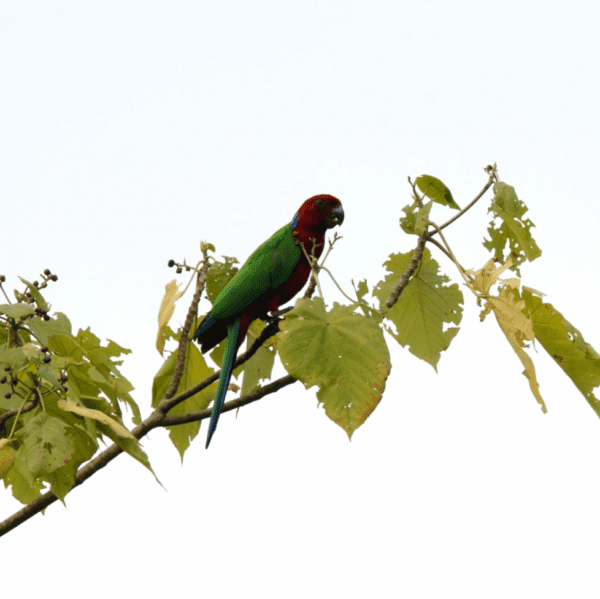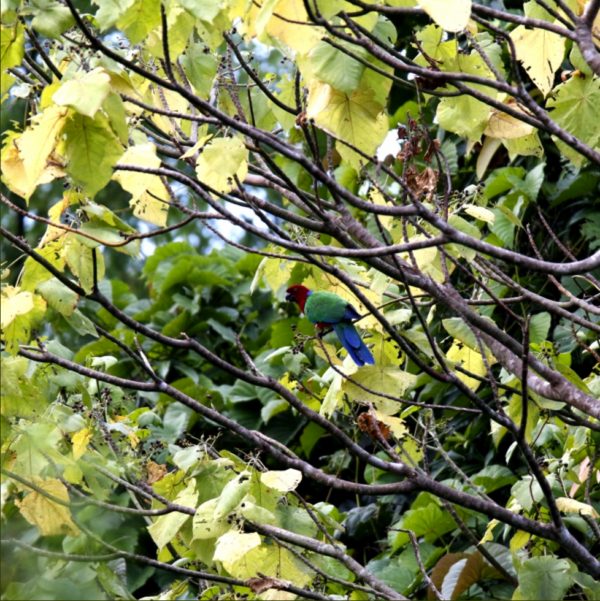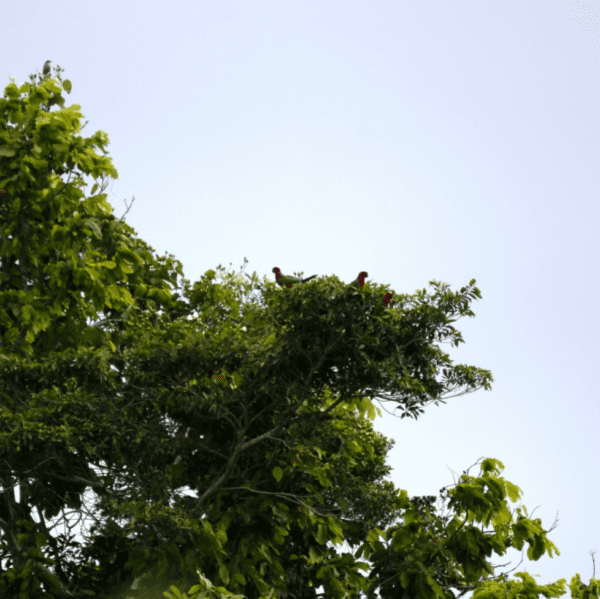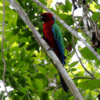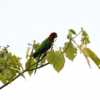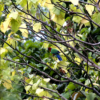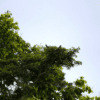
Prosopeia

splendens
Size:
45 cm (17.5 in)
Weight:
280 g (9.8 oz)
Subspecies including nominate:
one
Colour Adult:
Both adults different from the Red Shining Parrot (P. tabuensis) by having bright red head and underparts; forehead, lores and feathers below lower mandible darker red; wide blue collar across upper mantle; no red edges to feathers on rump. Beak grey/black.
Colour Juvenile:
As in adults but with horn-coloured beak with grey streaking; pale eye ring and brown eye.
Call:
Described as loud and squawking, repeated in bursts. Also grating notes, and soft ra-ra-ra-ra when perched.
More Information:
Content Sources:
CITES
BirdLife International
Cornell Lab of Ornithology/Birds of the World
A Guide to Parrots of the World, Juniper and Parr, 1998
Parrots of the World, Forshaw and Cooper, 1977. 2010 edition
Parrots of the World, Forshaw, 2006.
Lexicon of Parrots, Thomas Arndt.
Parrots in Aviculture, Low, 1992.
Captive Status:
Very rare
Longevity:
—
Housing:
Walk-in enclosure, minimum length 4.5 m (14.7 ft).
Diet:
Fruit such as: apple, pear, orange, banana, cactus fruits, pomegranate, etc, forming about 30 percent of diet; vegetables such as: carrot, celery, green peas and beans, corn; green leaves such as: Swiss chard, lettuce, sowthistle, dandelion, chickweed; spray millet; small seed mix such as: canary, millet and smaller amounts of oats, buckwheat and safflower; soaked and sprouted sunflower seed; cooked beans and other pulses and complete pellet.
Enrichment:
Enjoys bathing, so provide overhead misters or shallow water bowls; bird-safe fresh branches with flowers, also fir, willow and pine branches; chew toys. Enjoys flying, provide lots of space in aviary.
Nest Box Size:
12″ x 12″ x 40″ (30.5 cm x 30.5 cm x 101.6 cm) vertical box.
Clutch Size:
1 – 4
Fledging Age:
8 weeks
Hatch Weight:
—
Peak Weight:
—
Weaning Weight:
—
World Population:
3000-5000 mature individuals, population trend unknown.
IUCN Red List Status:
Near Threatened
CITES Listing:
Appendix II
Threat Summary:
A BirdLife “restricted-range” species. Forested areas on Kadavu were heavily logged in the late 1960s and early 1970s. Is very scarce and declining on Viti Levu. Habitat loss and fragmentation for agriculture continue, with about 75% of the forest remaining. Can use degraded habitats, but fires endanger what forest is left. Forest loss is occurring at a rate of 4-5% over three generations and appears to have accelerated based on losses in 2017-2021. Trade is a moderate threat.
Range:
Kadavu and Ono, also introduced to Viti Levu, Fiji Islands.
Habitat:
Found in forest, agricultural lands and around human villages both in the lowlands and hills. It is assumed to be a cavity nester like its closest congener P. tabuensis.
Wild Diet:
Eats fruit and seeds, both in the forest canopy and in agricultural gardens.
Ecology and Behaviour:
Are found singly, in pairs or in flocks of up to 40 birds outside the breeding season.
Clutch and Egg Size:
1 to 4 rounded eggs, 38.5 x 30.0 mm (1.5 x 1.2 in).
Breeding Season:
June – January
Related Links:
—
